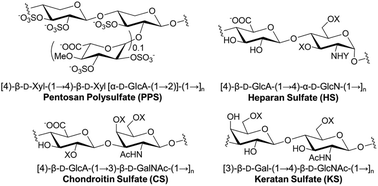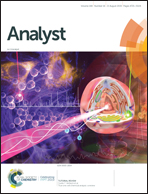Bottom-up and top-down profiling of pentosan polysulfate
Abstract
Pentosan polysulfate (PPS) is a semi-synthetic glycosaminoglycan (GAG) mimetic. PPS, synthesized through the chemical sulfonation of a plant-derived β-(1 → 4)-xylan, is the active pharmaceutical ingredient of the drug Elmiron™ used to treat interstitial cystitis. Unlike natural GAGs that can be enzymatically broken down into oligosaccharides for analysis, PPS is an unnatural polyanionic polysaccharide and is not amenable to such an analytical approach. Instead reactive oxygen species were used for the controlled depolymerization of PPS and the resulting oligosaccharide fragments were then analyzed by liquid chromatography-mass spectrometry (LC-MS) to obtain bottom-up information on its composition. Because PPS has an average molecular weight ranging from 4000 to 6000 Da, similar to that of low molecular weight heparin, this suggested that it might be possible to use LC-MS on its intact chains and perform top-down analysis. The bottom-up and top-down analysis of PPS provides the first detailed compositional and structural information on PPS. Finally, we examined whether PPS would interfere with polysaccharide lyases and hydrolases, used in the analysis of natural GAGs such as chondroitin sulfates, heparan sulfate, and keratan sulfates. We found that PPS did not interfere with GAG analysis, suggesting that a combination of chemical and enzymatic treatment could be used to analyze samples containing both natural GAGs and PPS.

- This article is part of the themed collection: Analyst Recent HOT articles


 Please wait while we load your content...
Please wait while we load your content...